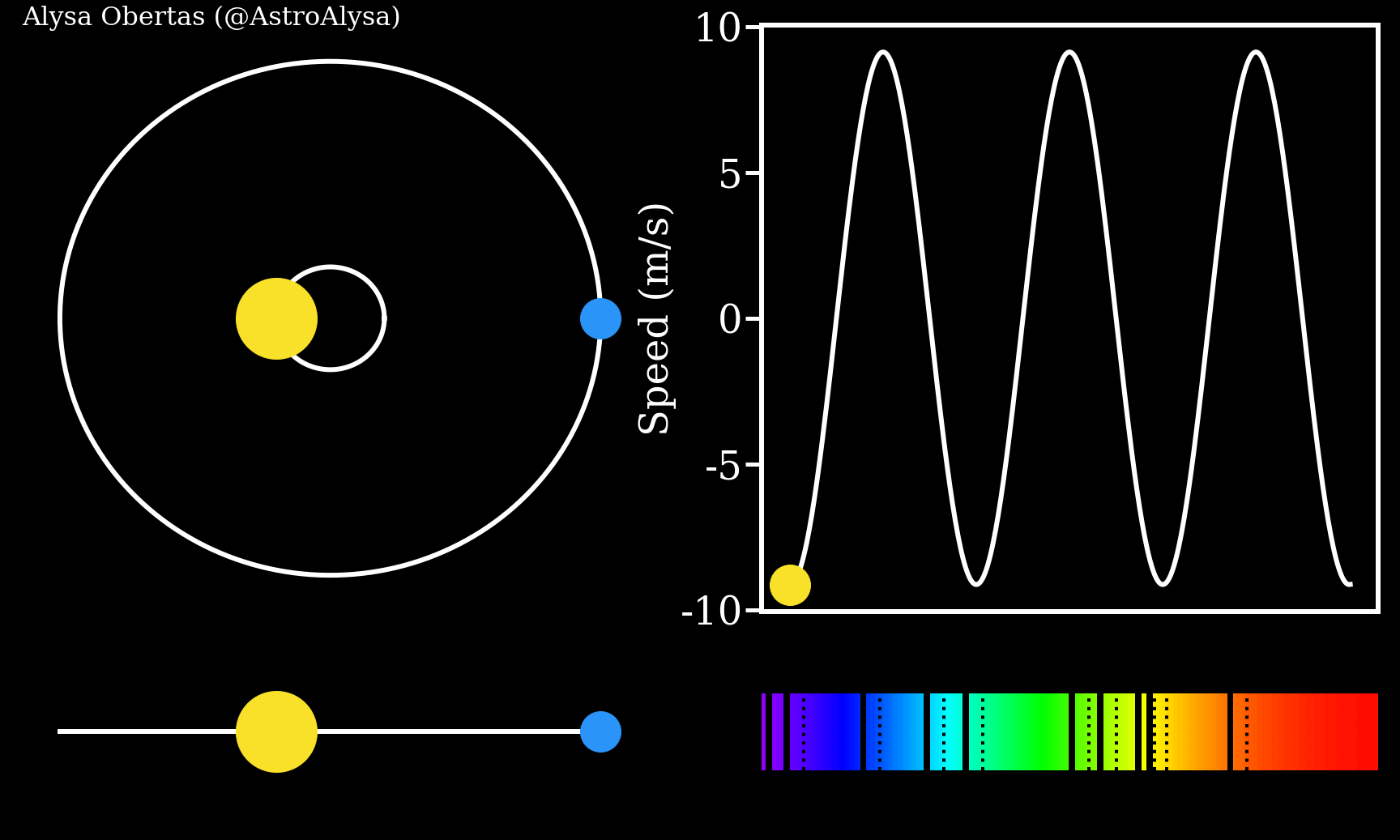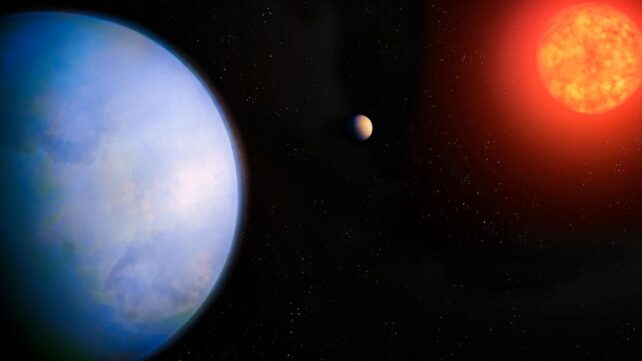A new exoplanet candidate has just burst onto the scene, and it may be one of the best alien worlds yet on which to search for extraterrestrial life.
It's just 18 light-years away: a super-Earth named GJ 251c with a minimum mass about 3.84 times that of our own planet. The most exciting part? It's smack-bang in its star's habitable zone – an orbital distance neither too far from nor too close to the star to support life.
"The exoplanet is in the habitable or the 'Goldilocks Zone,' the right distance from its star that liquid water could exist on its surface, if it has the right atmosphere," explains astronomer Suvrath Mahadevan of Pennsylvania State University.
Related: Earth Could Be Even More Habitable. We'd Just Need to Shift Jupiter's Orbit
Scientists are still trying to figure out the complex mix of ingredients that make up a world on which life can emerge, but there are a few key big-picture characteristics to look for before examining a candidate more closely.
The first two things scientists look for are: whether the world has a solid, rocky composition like Earth, since it's the only world we know for a fact hosts life; and whether the planet is at a distance from its star where temperatures allow for liquid water, the so-called "solvent of life".
University of California, Irvine · UC Irvine Podcast: Studying a Nearby Exoplanet
Exoplanets that tick both these boxes are surprisingly rare in the catalog of thousands of worlds discovered to date. Therefore, one that not only ticks those boxes but is also close enough for detailed study is a treasure among treasures.
"What makes [GJ 251c] especially valuable is that its host star is close by, at just about 18 light-years away," says astronomer Paul Robertson of the University of California, Irvine. "Cosmically speaking, it's practically next door."
The exoplanet orbits a star called GJ 251, a red dwarf about a third of the mass and diameter of the Sun. Because it's small and cool, the habitable zone is much closer to the star than the Solar System's habitable zone. This can actually make any worlds hanging out there easier to find, because they have shorter orbits, making the signals from multiple orbits easier to spot and stack.
A team of astronomers led by Corey Beard of UC Irvine targeted GJ 251 for observation in a search for low-mass nearby worlds that might be good candidates for direct imaging. This star was chosen because it was already known to host an exoplanet, GJ 251b, a super-Earth 3.85 times Earth's mass with a 14.2-day orbit that's too close to the star for habitability. Astronomers have also collected more than 20 years' worth of data on the star.

To add to this existing data, the researchers took new, higher-resolution observations to study the tiny movements of the star as it's tugged about by the gravitational pull of any planets in orbit around it. To their intense delight, they found not just the signal of the known planet, but evidence of a second world, with an orbital period of 53.6 days – in the star's habitable zone.
We don't know much about GJ 251c yet. The gravitational tugging it exerts on the star has yielded a measurement of its mass, but because it doesn't pass in front of its star, it's impossible to gauge its diameter and other properties without further information.
Luckily, it's a prime candidate for further observations. The researchers believe that the exoplanet should be detectable in future direct imaging campaigns, where astronomers seek to investigate the world not by studying its effect on the star, but directly observing the exoplanet itself.
This is not easy to do, but we're right on the cusp of new technologies that enable a new era in direct-imaging studies of alien worlds.
"We are at the cutting edge of technology and analysis methods with this system," Beard says. "While its discovery is quite statistically significant, we are still determining the status of the planet due to the uncertainty of our instruments and methods. We need the next generation of telescopes to directly image this candidate, but what we also need is community investment."
We're so tantalizingly close to the next generation of telescopes that will be able to reveal whether or not GJ 251c has an atmosphere that traps heat to allow oceans of water to slosh around on its surface.
"While we can't yet confirm the presence of an atmosphere or life on GJ 251c, the planet represents a promising target for future exploration," Mahadevan adds. "We made an exciting discovery, but there's still much more to learn about this planet."
The research has been published in The Astronomical Journal.

